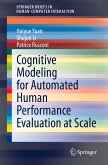The book presents frameworks and methods for conducting research and study of tacit engagement that includes ethnography, experiments, discourse analysis, gesture analysis, psycholinguistic analysis, artistic experiments, installations, and improvisation. Case studies illustrate the use of various methods and the application and emergence of frameworks.
Tacit Engagement will be of interest to researchers, designers, teachers and students concerned with new media, social media and communications networks; interactive interfaces, including information systems, knowledge management, robotics, and presence technologies.
Not since Michael Polanyi have we seen such wise science about the tacit: how we know more than we can tell. Gill brings to the present era of design and data a profoundly needed perspective on meaning that comes from social dialogue, skilled performance, relational gesture and rhythm. - Sha Xin Wei, Ph.D. (Synthesis, ASU)
Dieser Download kann aus rechtlichen Gründen nur mit Rechnungsadresse in A, B, BG, CY, CZ, D, DK, EW, E, FIN, F, GR, HR, H, IRL, I, LT, L, LR, M, NL, PL, P, R, S, SLO, SK ausgeliefert werden.
"The book explores what an 'interface' means in terms of technology and what is needed for an interface to support how people relate to each other. ... It is apparently written mainly for an academic audience, especially researchers and graduate students in human-computer interaction (HCI) and related fields. That said, it may also be of interest as background reading for professionals in areas where HCI and computer interfaces play important roles ... ." (R. M. Malyankar, Computing Reviews, computingreviews.com, May, 2016)









